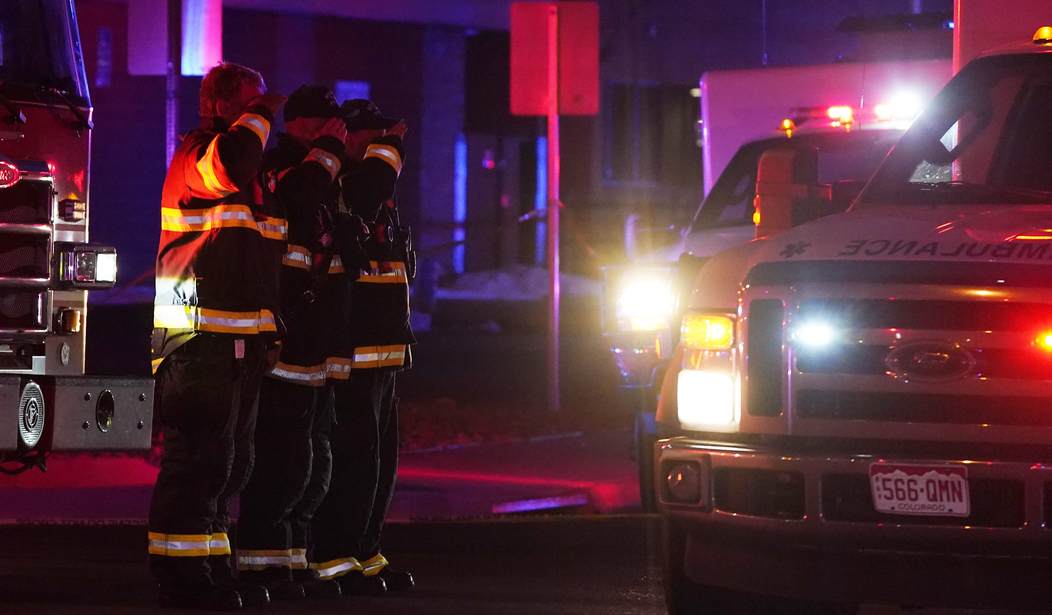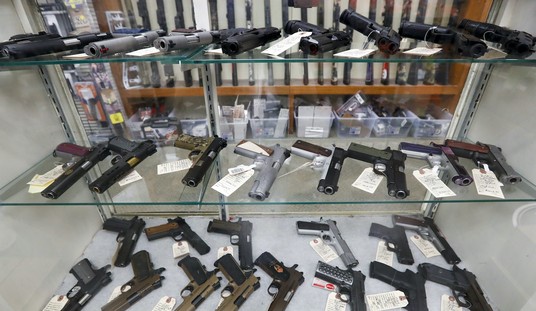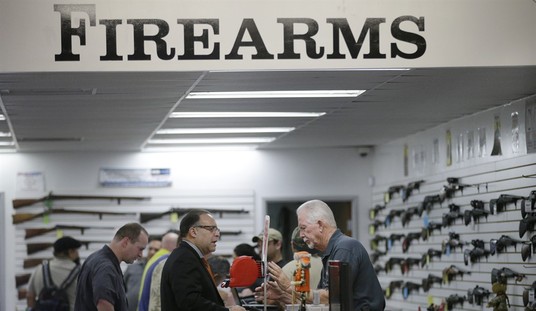Recently colleague and fellow writer Lee “The Gun Writer” Williams wrote a piece for the Second Amendment Foundation’s Investigative Journalism Project. In the piece “Huh? CNN claims there have been 641 mass shootings this year — almost two per day” Williams picks apart CNN’s false claims about mass shootings. The article actually has a lot of hot air to be honest. The issue that he identified with their reporting revolves around where CNN gets their data. CNN and many other news outlets have been adopting and going ga ga over numbers from the Gun Violence Archive (GVA). The organization, as Williams has uncovered in several of his pieces inflates their statistics. Their reporting is not consistent with the way the FBI categorizes so-called mass shootings. The numbers that the GVA put out are favored because they’re able to incite fear in the population, making people think there are far more “mass shooting” events than there really are. I certainly commend Lee on his work. He even did go forward with interviewing the executive director Mark Bryant to try and set the record straight in one of the articles.
The big challenge that we all have with the situation does revolve around the definition of “mass shooting.” If you’re looking for data from the FBI on “mass shootings”, you’re going to be directed to their data about “active shooters.” Maybe this is a bit of a hair splitting situation, but it’s not. Not by a long shot. In a report put out by the Rockefeller Institute of Government, they discuss many of these issues. The actual inception of the report had to do with a group assembled by anti-freedom caucus member Governor Phil Murphy of New Jersey (from Massachusetts). It was his group that chartered the study and there’s a lot in there that does not exactly fit the narrative that Murphy would want. From the report:
A central challenge in developing public policy solutions to mass shootings in America is the absence of a precise and generally accepted definition. Without this, the result is a distorted understanding of the actual context of the problem of mass and school shootings. Put plainly, we cannot solve a problem we do not fully understand.
There is wide variation on how mass shootings are defined. Various government organizations (e.g., the Centers for Disease Control, U.S. Department of Education), advocacy organizations (e.g., Everytown for Gun Safety), and other entities (e.g., GunViolenceArchive.org’s Mass Shootings Tracker) offer data that are based on their own descriptions that vary based on the number of victims (either killed or total shot), location, and the like. As a result, these definitions — several of which are discussed below — are inconsistent, overly broad, and ultimately lead to inflated statistics.
I find it interesting that those of us on freedom’s side are not the only ones to notice the issue with the noted groups and their shoddy statistics. The FBI’s data on “active shooter” events carve up what qualifies in a different way. From the FBI document “Active Shooter Incidents in the United States in 2020” we can get a look at how active shooter events are classified.
The FBI defines an active shooter as one or more individuals actively engaged in killing or attempting to kill people in a populated area.3 Implicit in this definition is the shooter’s use of a firearm. The active aspect of the definition inherently implies the ongoing nature of an incident, and thus the potential for the response to affect the outcome.
[…]
When evaluating shooting incidents to determine if they met the FBI’s active shooter definition, researchers considered for inclusion:
■ Shootings in public places
■ Shootings occurring at more than one location
■ Shootings where the shooter’s actions were not the result of another criminal act
■ Shootings resulting in a mass killing4
■ Shootings indicating apparent spontaneity by the shooter
■ Shootings where the shooter appeared to methodically search for potential victims
■ Shootings that appeared focused on injury to people, not buildings or objectsThis report does not encompass all gun-related shootings. A gun-related incident was excluded if research established it was the result of:
■ Self-defense
■ Gang violence
■ Drug violence
■ Contained residential or domestic disputes
■ Controlled barricade/hostage situations
■ Crossfire as a byproduct of another ongoing criminal act
■ An action that appeared not to have put other people in peril
The citation for “4” next to “Shooting resulting in a mass killing” is as follows:
The federal definition of “mass killing” which is defined as “three or more killings in a single incident”. Derived from Investigative Assistance for Violent Crimes Act 0f 2012, 28 USC530C(b)(1)(M)i.
That section of law, Investigative Assistance for Violent Crimes Act of 2012, reads:
(I) the term `mass killings’ means 3 or more killings in a single incident; and
(II) the term `place of public use’ has the meaning given that term under section 2332f(e)(6) of title 18, United States Code.”.
That’s how the FBI classifies an active shooter event. They don’t classify them as “mass shootings.” What’s the Gun Violence Archive’s definition for a “mass shooting?”
Mass Shootings are, for the most part an American phenomenon. While they are generally grouped together as one type of incident they are several with the foundation definition being that they have a minimum of four victims shot, either injured or killed, not including any shooter who may also have been killed or injured in the incident. Link to follow
Looking at the two methods of counting what qualifies for such an event, it’s notable that they’re very different. William’s is correct to say:
The problem is how Bryant and his 20 staffers define mass shootings. When most people hear the term “mass shooting,” they picture a crazed gunman stalking the halls of a school or a shopping mall, coldly and randomly executing innocent young victims. What does not come to mind are rival drug crews shooting it out in Chicago or Detroit, or a madman murdering his entire family, which no sane person would consider a mass shooting. The GVA makes no such distinction. If four people are wounded, the GVA labels it a mass shooting regardless of the circumstances, and the media and anti-gun politicians lap up the GVA’s inflated stats.
According to Bryant’s all-inclusive definition, there were 417 mass shootings in 2019. The FBI says there were 30, because it uses a much narrower and more realistic definition. You decide which figure is more accurate and more honest.
Where things start to really go into the weeds is when organizations try to define “school shootings.” The definition of school shooting can be conflated as was also reported by the Rockefeller Institute of Government.
After the February 14, 2018, shooting at Marjory Stoneman Douglas High School in Parkland, Florida, for example, headlines around the country reported it to be the seventeenth school shooting of the year. Many news outlets relied on data from a prominent gun control organization, Everytown for Gun Safety. Everytown defines school shootings as “any time a firearm discharges a live round inside or into a school building or on or onto a school campus or grounds, as documented by the press and, when necessary, confirmed through further inquiries with law enforcement or school officials.” Based on this definition, and subsequently included in their compiled data, are attempted or completed suicides, accidental discharges, and purposeful discharges in which no one is injured or killed. When the seventeen events reported by Everytown for 2018 (through the Marjory Stoneman Douglas shooting) are separated
based on their context, the number of school shootings in the more “traditional” sense (using Columbine as a template) is reduced to three. This, of course, creates issues developing appropriate policies and responses. Since these situations all required qualitatively different responses from school administrators, law enforcement officials, and other vested stakeholders, treating them all the same for the purpose of providing more compelling statistics is problematic.
Looking at the way anti-freedom caucus members classify “school shootings” needs to raise eyebrows. Basically a school shooting can occur when school is not in session with people that are meeting for say a drug deal, in the middle of the night. Would it be out of the question to think that people would meet in a school’s parking lot for such an event? I don’t think so. The following information on the most common places teens get drugs corroborates this idea to an extent:
Many drug transactions occur on school grounds, where teens sell drugs to their peers. At school, teens have access to a larger pool of drugs than what they would be accustomed to seeing in their own social groups.
Teenage drug dealers operate in shrouds of secrecy around campus, potentially making deals on a regular basis. Nearly 20% (1 in 5) of all high school students say that they have been sold, given, or offered drugs on school property.
What we’re dealing with in the United States right now are several different crises. First the obvious, violence. I don’t discriminate like some do. To me, all violence matters. Unlike the anti-gun groups, politicians, et.al. Violence and violent behavior is the problem, not the firearms. The other crisis we have is the near criminal misrepresentation of all of these events and statistics that occurs in the main stream media. It’s downright irresponsible to rely on the numbers generated by the Gun Violence Archive, as they’re not founded on any real crime statistics. They include news reports, which are not reliable for these purposes. The big news organizations that swoon over the GVA need to be more upfront with what they’re reporting. Perhaps turn directly to the FBI’s numbers on active shooters? What’s the problem? Not enough blood for you to dance in? We know that’s the case.
In closing, we’ll turn back to that Rockefeller Institute of Government report again. Right in the first pages they summarize what many would agree is the biggest problem we have on the subject of “mass shootings”, or perhaps in America across the board in some instnaces:
Exacerbating this already complex issue is the prevalence of social media and never ending wall-to-wall media coverage. Mass shootings, and those that are particularly
lethal, are amplified by the news cycle, making them appear more commonplace when they are, in fact, statistically rare. Despite their episodic and highly sensational nature,
however, not all mass shootings garner the same attention by the media.1 Those shootings that are the most lethal may receive more coverage, while those events that
are perceived as more “routine” by the media may not even be covered at all.As a result of the intense and often unbalanced media coverage of mass shootings, members of the public may hold disproportional attitudes about the events themselves. Certain shootings, for example, may be perceived as indicators of a broader social problem, while others are considered to be isolated events.2 Still, the collective phenomenon of mass shootings has been found to produce a host of outcomes for the public, including fear of crime, a potential moral panic, and the general belief that these events are more prevalent than their actual occurrence.3
Like the public, policymakers also have struggled with how to respond to mass shootings. Most policies center on either further restricting or expanding rights related to gun ownership and carrying, with a lesser emphasis on mental health protocols, regulating violent media, or policies related to security practices. More often than not, in the immediate aftermath of a mass shooting, a flurry of bills are introduced, but few, if any, are ever enacted into legislation.4 Further compounding the issue is that the new laws that are passed, or even those that have been on the books for decades, often are not enforced, leading them to be ineffective at preventing the next mass shooting.
Massive hat tip to Lee Williams for bringing up the subject. His reporting has brought forth many things that caused me to pause and look at a situation differently and dig in a little. Be sure to follow Williams over at The Gun Writer, on Armed American News, and The Second Amendment Foundation’s Investigative Journalism Project.








Join the conversation as a VIP Member